 One of the really great things about Farm Foundation events is how the group brings together people from divergent backgrounds and points-of-view to freely discuss the issues affecting American Agriculture today. The latest session at the Foundation’s Food and Agriculture Policy Summit it is hosting here in Washington, D.C. is another great example of that.
One of the really great things about Farm Foundation events is how the group brings together people from divergent backgrounds and points-of-view to freely discuss the issues affecting American Agriculture today. The latest session at the Foundation’s Food and Agriculture Policy Summit it is hosting here in Washington, D.C. is another great example of that.
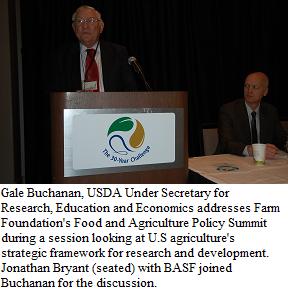 Just a few minutes ago, Dr. Jonathan Bryant with BASF North America and Dr. Gale Buchanan, Under Secretary for Research, Education and Economics at USDA finished their presentations bringing private and public sector viewpoints to the research and development session of the conference.
Just a few minutes ago, Dr. Jonathan Bryant with BASF North America and Dr. Gale Buchanan, Under Secretary for Research, Education and Economics at USDA finished their presentations bringing private and public sector viewpoints to the research and development session of the conference.
I caught up with the two of them right after their talk and asked how the private and public sectors can better work together to make sure the research dollars and knowledge flow back and forth between the two.
“Obviously, we need to keep supporting research and education programs at both the state and federal level,” said Buchanan.
Bryant echoed Buchanan’s sentiments about the need for public funding for research and development. “I think there are some very similar priorities. We obviously depend on the public sector to give us a good educated workforce.” He added that the private sector also depends on the regulatory function of the government.
Both men agree that they need each other for a dependable research and development function in the ag community.
“There’s much to be gained from the collaborative relationship that the private sector has with the public sector, because in the end, we all are trying to get to the same goal: provide for the needs of the American people and people all over the world,” Buchanan said.
During his talk, Buchanan pointed out that research and development pays back a return of 53 percent annually… better than any stock.
Bryant said that taking a long-term view is key for private companies and public institutions to make sure Americans are truly being served in this collaborative relationship.
You can listen to my conversation with Drs. Buchanan and Bryant by clicking here: Bryant-Buchanan1.mp3
Download the audio here. (mp3)
 Kyle Jones, a 22-year custom applicator with Heartland Coop in Slater, Iowa, was named as the 2008 Ag-Chem Operator of the Year during this year’s Agricultural Retailers Association (ARA) annual convention in Austin, Texas.
Kyle Jones, a 22-year custom applicator with Heartland Coop in Slater, Iowa, was named as the 2008 Ag-Chem Operator of the Year during this year’s Agricultural Retailers Association (ARA) annual convention in Austin, Texas.

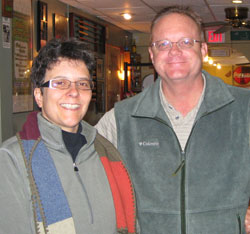 If you’re a regular AgWired reader then you know I’ve pointed you to Mindy McAdams before. She’s a University of Florida Journalism Professor. I got to meet her for coffee yesterday to talk about “online journalism.” You definitely need to be
If you’re a regular AgWired reader then you know I’ve pointed you to Mindy McAdams before. She’s a University of Florida Journalism Professor. I got to meet her for coffee yesterday to talk about “online journalism.” You definitely need to be 
 The financial crisis that has gripped many of the urban areas of the country is now spreading out to the rural parts of America. And that is bad news (obviously)… and actually some good news.
The financial crisis that has gripped many of the urban areas of the country is now spreading out to the rural parts of America. And that is bad news (obviously)… and actually some good news. “We’re now seeing the indirect effects of the financial crisis now that it is affecting commodity prices. Now, land prices are starting to soften a little in various areas.”
“We’re now seeing the indirect effects of the financial crisis now that it is affecting commodity prices. Now, land prices are starting to soften a little in various areas.” Rural America’s infrastructure challenges cut to the heart of the six challenges outlined during this morning’s session of the Farm Foundation’s Food and Agriculture Policy Summit being held in Washington, D.C.
Rural America’s infrastructure challenges cut to the heart of the six challenges outlined during this morning’s session of the Farm Foundation’s Food and Agriculture Policy Summit being held in Washington, D.C. 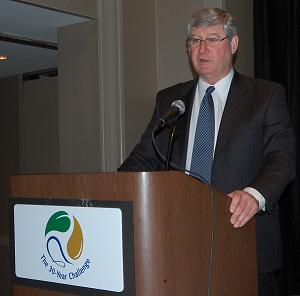 “The engineers will tell you [the pavements] look OK on the surface, but underneath it is starting to crumble.” Griffin says by the time the damage is clearly noticeable, it costs two to three times as opposed to normal maintenance and repair.
“The engineers will tell you [the pavements] look OK on the surface, but underneath it is starting to crumble.” Griffin says by the time the damage is clearly noticeable, it costs two to three times as opposed to normal maintenance and repair. America is losing rural farm and forest land… some of it the best farmland in the world… at an alarming rate, the equivalent of losing the entire states of Connecticut and Vermont over a six-year period.
America is losing rural farm and forest land… some of it the best farmland in the world… at an alarming rate, the equivalent of losing the entire states of Connecticut and Vermont over a six-year period.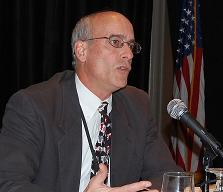 “Being taken out of production PERMANENTLY!” And Wagner pointed out that this isn’t land that is being retired into some conservation program. He says it is going into commercial development and rural residential developments.
“Being taken out of production PERMANENTLY!” And Wagner pointed out that this isn’t land that is being retired into some conservation program. He says it is going into commercial development and rural residential developments. 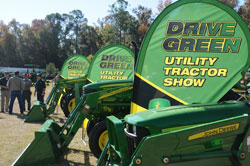 It’s back on location time here in Gainesville, FL at
It’s back on location time here in Gainesville, FL at  One of the really great things about Farm Foundation events is how the group brings together people from divergent backgrounds and points-of-view to freely discuss the issues affecting American Agriculture today. The latest session at the Foundation’s Food and Agriculture Policy Summit it is hosting here in Washington, D.C. is another great example of that.
One of the really great things about Farm Foundation events is how the group brings together people from divergent backgrounds and points-of-view to freely discuss the issues affecting American Agriculture today. The latest session at the Foundation’s Food and Agriculture Policy Summit it is hosting here in Washington, D.C. is another great example of that.  Just a few minutes ago, Dr. Jonathan Bryant with BASF North America and Dr. Gale Buchanan, Under Secretary for Research, Education and Economics at USDA finished their presentations bringing private and public sector viewpoints to the research and development session of the conference.
Just a few minutes ago, Dr. Jonathan Bryant with BASF North America and Dr. Gale Buchanan, Under Secretary for Research, Education and Economics at USDA finished their presentations bringing private and public sector viewpoints to the research and development session of the conference. The world’s population will grow by 33 percent by the year 2040, but the amount of farmland to feed and fuel that growing demand won’t have to grow by that same one-third… that’s what attendees at the Farm Foundation’s Food and Agriculture Policy Summit in Washington, D.C. heard this morning.
The world’s population will grow by 33 percent by the year 2040, but the amount of farmland to feed and fuel that growing demand won’t have to grow by that same one-third… that’s what attendees at the Farm Foundation’s Food and Agriculture Policy Summit in Washington, D.C. heard this morning. “Agriculture’s role is not one of conflict between food or fuel. It is one that is quite compatible. Producing more food results in more fuel being produced as well.”
“Agriculture’s role is not one of conflict between food or fuel. It is one that is quite compatible. Producing more food results in more fuel being produced as well.”